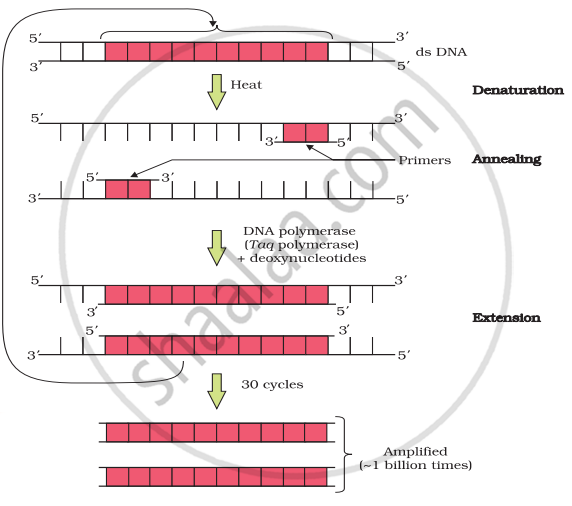Advertisements
Advertisements
प्रश्न
From what you have learnt, can you tell whether enzymes are bigger or DNA is bigger in molecular size? How did you know?
उत्तर
Enzymes are proteins. Protein molecules are macromolecules with highly complex structures. They are made up of amino acids. Around 300 types of amino acids are found in nature, but only 20 of these amino acids are found in animal and plant cells. Amino acids form chains and are linked to each other by peptide bonds. The sequence of amino acids in the polypeptide chain of each protein molecule is of a specific type. Proteins have very high molecular weight. Proteins made from different amino acids are of different types. Around 50,000 types of proteins are found in our body.
The biological macromolecules of DNA have a complex structure. These are biological macromolecules even larger than proteins (enzymes). Their molecular weight ranges from 106 to 109 Dalton. The DNA molecule is made up of a polynucleotide chain. m-RNA, t-RNA and r-RNA having molecular weight less than DNA are formed. RNA plays an important role in protein synthesis. For RNA synthesis, DNA molecule gets duplicated at different places and form small complementary chains, i.e. a small molecule of ribonucleotide acid. These are called primers. RNA: The synthesis of inserters is catalysed by the enzyme RNA polymerase. RNA molecules are used for protein synthesis. This makes it clear that DNA molecules are larger molecules than proteins (enzymes).
APPEARS IN
संबंधित प्रश्न
Suggest and describe a technique to obtain multiple copies of a gene of interest in vitro.
Can you list 10 recombinant proteins which are used in medical practice? Find out where they are used as therapeutics (use the internet).
Can you recall meiosis and indicate at what stage a recombinant DNA is made?
Explain briefly:
PCR
Explain briefly:
Chitinase
State the importance of using a bioreactor.
Answer the following question:
Describe the formation of recombinant DNA by the action of EcoRI.
Answer the following question:
Describe the process of amplification of the "gene of interest" using the PCR technique.
______ plays an important role in blood clotting.
DNA fragments generated by the restriction endonuclease in a chemical reaction can be separated by ______.
PCR and restriction fragment length polymorphism are the methods for ______.
Blood stains are found at the site of a murder. It DNA profiling technique is to be used for identifying the criminals, which of the following is ideal for use?
An antibiotic resistance gene in a vector usually helps in the selection of ______.
Significance of 'heat shock' method in bacterial transformation is to facilitate ______.
Which of the following steps are catalysed by Taq DNA polymerase in a PCR reaction?
Do biomolecules (DNA, protein) exhibit biological activity in anhydrous conditions?
Identify and explain steps ‘A’, ‘B’ and ‘C’ in the PCR diagram given below.

